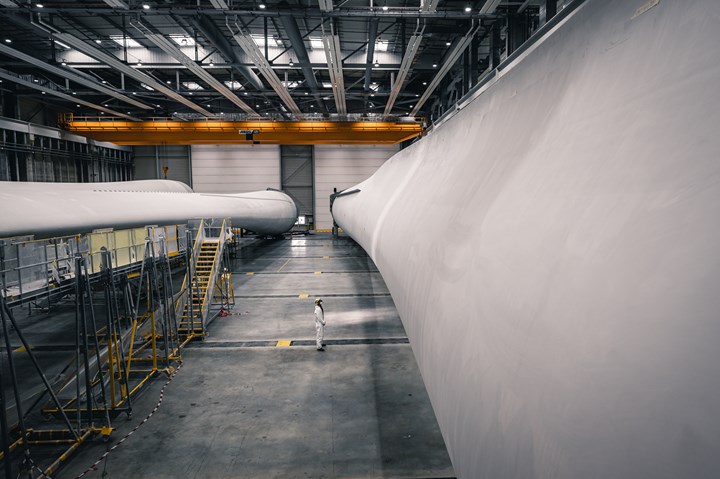GE Renewable Energy to expand wind blade facility in Gaspé
A partnership with Canada and Québec will enable the company to expand its existing facility and will result in the creation of 200 skilled jobs.

GE Renewable Energy (Paris, France) is partnering with the governments of Canada and Québec for the expansion of its wind turbine blade facility in Gaspé, Canada. At an event attended by prime minister of Canada, Justin Trudeau, and Québec minister of energy and natural resources, Jonatan Julien, the parties announced their plans to jointly invest in the expansion of the facility owned by LM Wind Power (Kolding, Denmark), a GE Renewable Energy business.
The investments will enable the company to expand its existing facility to meet the growing demand for renewable energy across North America. The expansion will result in the creation of 200 skilled jobs. The plant, which started operations in 2005 and was previously expanded in 2017, has manufactured more than 10,000 blades, equivalent to approximately 6,000 megawatts (MW).
Heather Chalmers, president and CEO of GE Canada (Mississauga, Ontario, Canada), says, “GE believes climate change is an urgent global priority. We are pleased to be working with committed partners, like Canada, to provide the myriad technology solutions that will be required for the world to meet its net zero commitments.”
Olivier Fontan, president and CEO of LM Wind Power, adds, “We are committed to helping our customers lead the energy transition by supplying them with state-of-the-art wind turbine blades that enable them to produce clean, renewable energy as sustainably and efficiently as possible.”
The Canadian Renewable Energy Association (Ottawa, Ontario, Canada) reports that Canada has more than 13,500 MW of installed wind capacity, enough to supply approximately three million homes.
Related Content
-
Collins Aerospace to lead COCOLIH2T project
Project for thermoplastic composite liquid hydrogen tanks aims for two demonstrators and TRL 4 by 2025.
-
MingYang reveals 18-MW offshore wind turbine model with 140-meter-long blades
The Chinese wind turbine manufacturer surpasses its 16-MW platform, optimizes wind farm construction costs for 1-GW wind farms.
-
Composites end markets: Energy (2024)
Composites are used widely in oil/gas, wind and other renewable energy applications. Despite market challenges, growth potential and innovation for composites continue.















